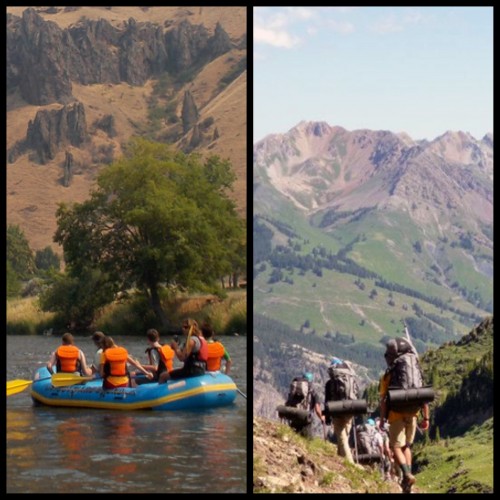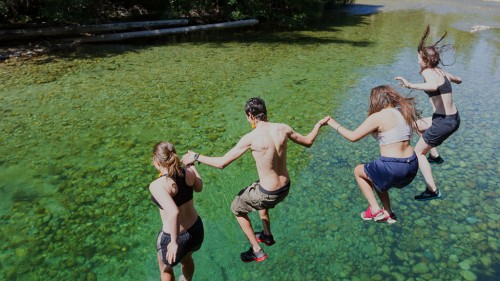Summer has officially arrived.
The Outward Bound staff is busy preparing for the hundreds of students around the country who will soon embark on Outward Bound courses of all sorts: sailing, backpacking, mountaineering, kayaking, canoeing, rafting and rock climbing. And around the country, Outward Bound students are preparing, too. They’re breaking in their hiking boots. They’re getting their gear. They’re improving their cardiovascular health. They’re preparing themselves mentally. And with all of that preparing, students are realizing that they still have lots of questions. Although our Admissions Advisors are always on hand and happy to answer questions, we’ve rounded up a few of our most frequently asked questions for you, here.
How do I figure out what course is best for me?
- Interests and Activities: Outward Bound has courses that include everything from kayaking, canoeing, rafting and sailing, to mountaineering, backpacking, rock climbing and even dog sledding. Here is your chance to experience activities that you are interested in, whether you’ve tried them before or not. Do you have a particular passion for the ocean? Have you pictured yourself journeying through uncharted backcountry? Are you a river fanatic? Spend some time exploring the website – and the expedition styles. Pause and imagine yourself in the frames of the photos you see. Could you see yourself rafting down the Colorado River? Or do you see yourself on anchor watch on a clear, dark night off the coast of Maine?
- Pace and Difficultly Level: Outward Bound has expedition styles for everyone, whether you are at peak physical performance or are still working towards your fitness goals. Would you prefer to navigate thrilling whitewater rapids, or would you rather spend your days hiking with a pack on your back, pausing to enjoy an alpine stream? Although most of our courses provide a mix of fast and moderately-paced activities, some expeditions, by their very nature, are better suited for certain students. For example the true adrenaline junkies might enjoy whitewater canoeing, rafting or mountaineering. But rest assured – each of our expeditions involves plenty of excitement. There is no “hum-drum” on an Outward Bound course.
- What’s on your bucket list? For many, the accomplishment of completing an Outward Bound course is a check off the bucket list. The grit, perseverance and strong character it takes to complete a course makes it more rewarding than other programs out there. Maybe it’s an activity that earns a spot on your bucket list. Perhaps you’ve always dreamed of standing proud at the summit of a mountain. Or you’ve always hoped to carry your world with you in a canoe, skimming across the great Boundary Waters of Minnesota. Maybe learning to kayak has always been on your list – or scaling the side of a mountain with a harness and belay rope is a life dream. Or is it the destination itself that is on your bucket list? Sometimes students have a specific geographical region they are particularly excited to explore – the Pacific Northwest! The Florida Keys! The Maine coastline! Consult an Admissions Advisor with specific location requests – or use the Course Finder to identify the destinations you’re most excited to explore. Whatever your dream, an Outward Bound expedition is an excellent way to start checking things off the list in a safe, supportive, enriching environment. You can filter our courses according to expedition style on the Course Finder – one good way to start narrowing it down.
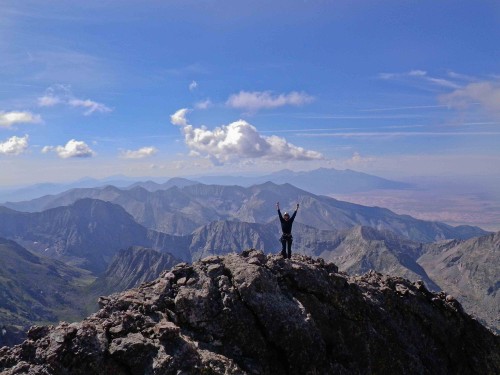
A student celebrates at the top of a mountain on course with Outward Bound.
- How far from home? Driving? Flying? Oftentimes students are working within specific budgets that do or do not allow for airfare. If you’re looking to stay close to home, there are plenty of options near your home town. You can filter courses according to your geographical area to find courses nearby. Or, if you are hoping to venture far from home , there are plenty of options throughout the United States. Some of our Semester and Gap Year programs even cross into other continents to countries like Costa Rica, Ecuador, Patagonia and Guatemala.
- How much time do you have? Deciding how long you want to go on course can help you narrow down your choices. Outward Bound expeditions vary from as short as one week up to 85 days – so you’re sure to find an option that works with your schedule. All you have to decide now is whether you want to dedicate your entire summer to an expedition or if you’d rather squeeze a course into the few weeks between tennis season and fall softball practice.
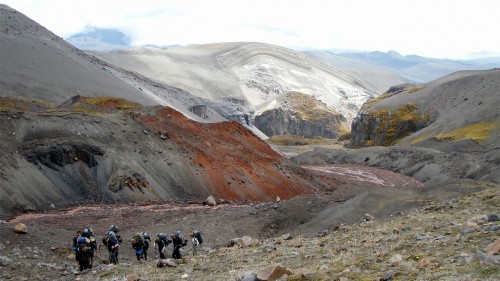
Students backpacking in Equador during the Rockies to Equador Leadership Semester course.
What is Outward Bound? What does a course look like?
Outward Bound delivers outdoor education programs throughout the United States. Our expeditionary learning framework uses unfamiliar settings as a way for students to experience adventure and challenge and discover that they can do more than they thought possible.
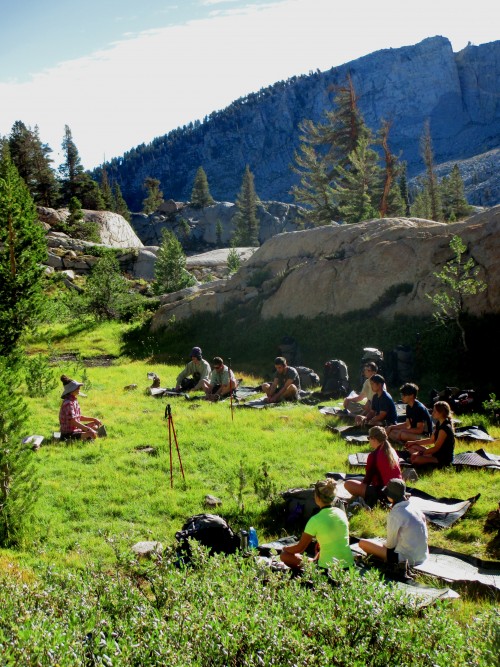
Outward Bound Instructor teaching outdoors on course in the High Sierras.
Every Outward Bound expedition is broken into three main parts: Training, Main, and Final. When students first arrive at their course start, they meet their Instructors and crew, stow away personal items, get familiar with the gear provided by Outward Bound, and immediately start learning.
- During the Training phase, students practice reading maps, using a compass, setting up a sleeping structure, staying dry and warm, cooking and cleaning in the wilderness, and other expedition-specific skills they’ll use on a daily basis.
- During the Main phase, as students travel from campsite to campsite, they build, practice, and reflect on skills, conduct service projects and also tackle at least one challenge element – rock climbing, a peak ascent or a big whitewater day. It is during the Main phase when students usually have a Solo experience. With sufficient food, equipment and skills, individuals spend three hours to three days alone at an assigned campsite – with Instructors periodically checking in on them.
- As the course nears the end, the group enters the Final phase. During this phase, Instructors may gradually transfer leadership responsibilities to the students, culminating with a Final Expedition. During the Final Expedition, students work as a team and utilize the skills they have acquired to solve problems and make group decisions, while Instructors maintain overall risk-management for the group with check-ins and advanced scouting.
What gear do I need to bring? What does Outward Bound provide?
Outward Bound will provide technical gear that includes, but is not limited to: sleeping bags, sleeping pads, tents/tarps, packs appropriate to your course type and cooking gear. Your Course Advisor will provide you with a comprehensive list of what you’ll need to bring with you, including required clothing specific to your course, toiletries and footwear. These lists are created specifically for the geographical area you’ll be traveling in – and for the activities you’ll be doing during your course.
What training do Instructors have? Who leads this course?
Outward Bound Instructors are not camp counselors. These are outdoor professionals with a wide range of diverse backgrounds that make them particularly well-suited to work with participants of all ages and life circumstances. They are experienced, qualified and committed to their students’ well-being through their values, judgment, words and actions. They are certified as Wilderness First Responders, Wilderness Advanced First Aiders, or the equivalent, and meet all Outward Bound, local, state, and federal requirements for their positions. Outward Bound staff are trained to identify, assess, and approach risk as a learning tool, to be managed but not eliminated, with the goal of providing Outward Bound students with the opportunity to gain insights and perspectives into their own and their crew’s capabilities that are unavailable anywhere else. Learn more about our stellar Instructors by reading about Emily Durkin and Ren Ledford on our blog.
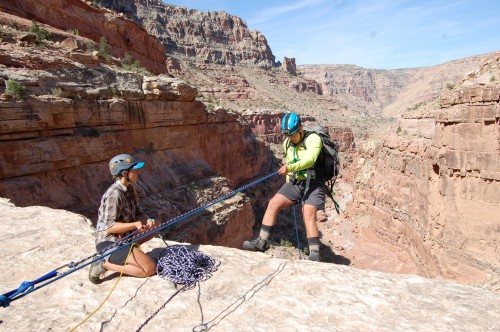
Instructor Ren Ledford helping rappel a student on course.
Where exactly am I going to be? What trails will I be on? Which forest areas?
Outward Bound’s network of regional schools means that we have base camps, course areas, and centers all over the country. So we have access to a wide variety (some might say nearly infinite) of choices when it comes to trails, rivers, forests, and geographical areas. Students will usually receive details from their Course Advisor about specific course areas a few weeks before the course begins. However, due to the dynamic nature of the wilderness, these details are subject to change. Forest conditions, late spring or summer snow, forest fires, flooding, etc. can all impact specific course areas. Outward Bound staff will always plan their path according to current, natural conditions. However, in the true spirit of Outward Bound, we learn to adjust as we go, problem-solve, and arm ourselves with plenty of contingency plans – just in case.
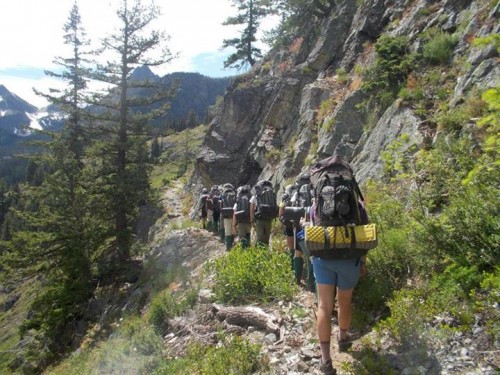
Students hiking through one of the many trails in the North Cascades on course with Outward Bound.
Who is going to be on my course?
The short answer is: some people will be like you, and some won’t be like you at all. Outward Bound courses attract participants who are interested in challenging themselves. These students come from all over the country and even from across the globe, from a variety of backgrounds and life circumstances, and arrive on course with a range of strengths, weaknesses and skill levels. However, the one thing they all have in common is they are committed to learning, they are seeking to strengthen their character and they are up for a challenge. Expect to encounter all sorts of individuals on your course – many of whom have far different perspectives from your own. But also expect to build strong bonds and real camaraderie with your crew – regardless of your differences. You’ll be living together, traveling together, working together, and learning together. You’ll be amazed at how close you feel at the end of your adventure – and how much you truly do have in common.
Solo – what is it like?
We often hear a lot of trepidation and concern about the Solo experience. But it needn’t be regarded with fear. Your Outward Bound Solo is a wonderful opportunity to come face to face with yourself, rest and recover from the rigors of the expedition, and prove to yourself that you really can make it in the wilderness for a few days on your own. The Solo usually occurs at the end of the Main phase of the expedition, so students have plenty of skills and knowledge to draw upon. Here’s how Outward Bound Admissions Manager, Laurel Zimmerman, explains it. Imagine a huge shopping center parking lot. It’s not outrageously enormous. But it’s not small, either. Then imagine about 8- 12 students, located throughout the parking lot, with the Instructor base camp nearby. Each student has plenty of parking spots all to themselves. Now, imagine changes in elevation, trees, hills, shrubs, rocks and other bits of landscape separating the students in the parking lot. The students cannot see each other. However, if one student blew a whistle or shouted at the top of their lungs, the others might be able to hear them. Now, imagine that each of these students gets settled into their spot, builds their shelter, and then essentially hangs out – reflecting, eating trail mix, taking long naps, writing in their journal, scrambling to stay dry if/when it rains. They have everything they need. They are confident in their skills. Their Instructors are checking in on them. And now it’s up to them to decide exactly what they are going to get out of their Solo experience.
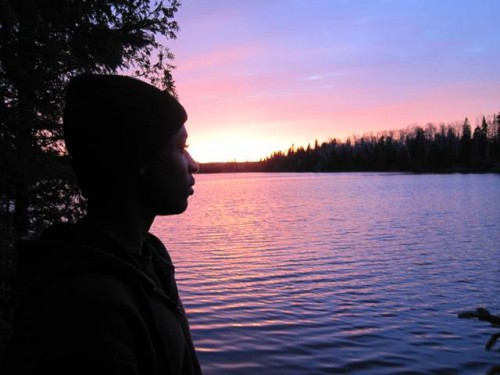
A student enjoys reflection time during his Solo on course.
In closing…. although we’ve done our best to capture a few of the most frequently asked questions here, you might also be interested in our official FAQ page. And remember, our Admissions Advisors are on hand – and happy – to answer additional questions and help find the Outward Bound course that’s right for you. We’d love to hear from you.
OTHER POSTS YOU MAY LIKE
Read More
Read More
Read More



